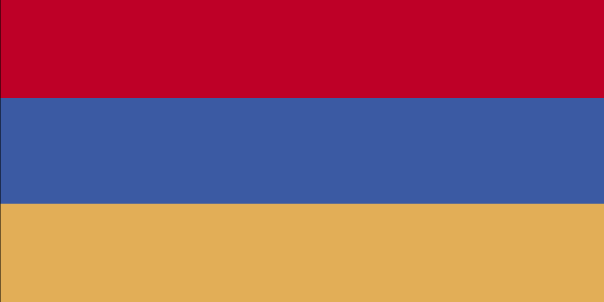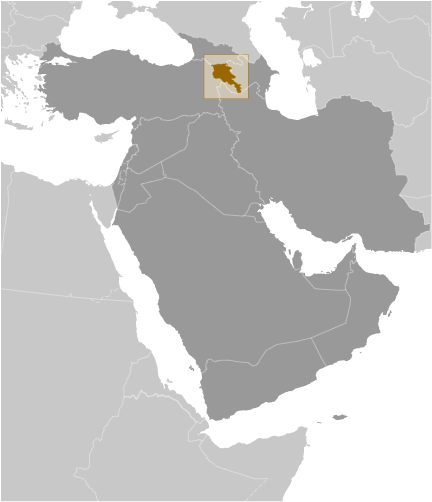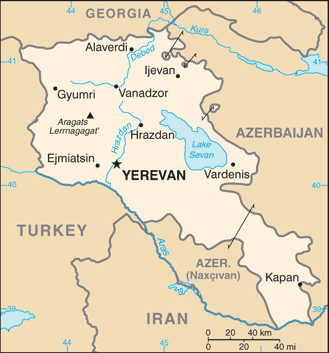|
Economy - overview:
|

|
|
After several years of double-digit economic growth, Armenia faced a severe economic recession with GDP declining more than 14% in 2009, despite large loans from multilateral institutions. Sharp declines in the construction sector and workers' remittances, particularly from Russia, led the downturn. The economy began to recover in 2010 with 2.1% growth, and picked up to 4.6% growth in 2011, before slowing to 3.8% in 2012. Under the old Soviet central planning system, Armenia developed a modern industrial sector, supplying machine tools, textiles, and other manufactured goods to sister republics, in exchange for raw materials and energy. Armenia has since switched to small-scale agriculture and away from the large agroindustrial complexes of the Soviet era. Since August 2011, Armenia experienced a sharp 15 percent currency depreciation and an increase in the unemployment rate. Armenia's geographic isolation, a narrow export base, and pervasive monopolies in important business sectors have made it particularly vulnerable to the sharp deterioration in the global economy and the economic downturn in Russia. Armenia has only two open trade borders - Iran and Georgia - because its borders with Azerbaijan and Turkey have been closed since 1991 and 1993, respectively, as a result of Armenia's ongoing conflict with Azerbaijan over the separatist Nagorno-Karabakh region. Armenia is particularly dependent on Russian commercial and governmental support and most key Armenian infrastructure is Russian-owned and/or managed, especially in the energy sector. The electricity distribution system was privatized in 2002 and bought by Russia's RAO-UES in 2005. Natural gas is primarily imported from Russia but construction of a pipeline to deliver natural gas from Iran to Armenia was completed in December 2008, and gas deliveries expanded after the April 2010 completion of the Yerevan Thermal Power Plant. Armenia's severe trade imbalance has been offset somewhat by international aid, remittances from Armenians working abroad, and foreign direct investment. Armenia joined the WTO in January 2003. The government made some improvements in tax and customs administration in recent years, but anti-corruption measures have been ineffective and the economic downturn has led to a sharp drop in tax revenue and forced the government to accept large loan packages from Russia, the IMF, and other international financial institutions. Amendments to tax legislation, including the introduction of the first ever "luxury tax" in 2011, aim to increase the ratio of budget revenues to GDP, which still remains at low levels. Armenia will need to pursue additional economic reforms and to strengthen the rule of law in order to regain economic growth and improve economic competitiveness and employment opportunities, especially given its economic isolation from two of its nearest neighbors, Turkey and Azerbaijan.
|
|
|
GDP (purchasing power parity):
|

|
|
$18.95 billion (2012 est.)
country comparison to the world: 134
$18.26 billion (2011 est.)
$17.46 billion (2010 est.)
note:
data are in 2012 US dollars
|
|
|
GDP (official exchange rate):
|

|
|
$10.55 billion (2012 est.)
|
|
|
GDP - real growth rate:
|

|
|
3.8% (2012 est.)
country comparison to the world: 91
4.6% (2011 est.)
2.1% (2010 est.)
|
|
|
GDP - per capita (PPP):
|

|
|
$5,600 (2012 est.)
country comparison to the world: 150
$5,500 (2011 est.)
$5,300 (2010 est.)
note:
data are in 2012 US dollars
|
|
|
GDP - composition by sector:
|

|
|
agriculture: 19.2%
industry:
40.8%
services:
40% (2012 est.)
|
|
|
Labor force:
|

|
|
1.194 million (2011 est.)
country comparison to the world: 138
|
|
|
Labor force - by occupation:
|

|
|
agriculture: 44.2%
industry:
16.8%
services:
39% (2008 est.)
|
|
|
Unemployment rate:
|

|
|
7% (2012 est.)
country comparison to the world: 76
5.9% (2011 est.)
|
|
|
Population below poverty line:
|

|
|
35.8% (2010 est.)
|
|
|
Household income or consumption by percentage share:
|

|
|
lowest 10%: 3.7%
highest 10%:
25.4% (2008)
|
|
|
Distribution of family income - Gini index:
|

|
|
30.9 (2008)
country comparison to the world: 110
44.4 (1996)
|
|
|
Investment (gross fixed):
|

|
|
37.1% of GDP (2012 est.)
country comparison to the world: 7
|
|
|
Budget:
|

|
|
revenues: $2.2 billion
expenditures:
$2.507 billion (2012 est.)
|
|
|
Taxes and other revenues:
|

|
|
20.8% of GDP (2012 est.)
country comparison to the world: 154
|
|
|
Budget surplus (+) or deficit (-):
|

|
|
-2.9% of GDP (2012 est.)
country comparison to the world: 106
|
|
|
Public debt:
|

|
|
42.1% of GDP (2012 est.)
country comparison to the world: 85
41.2% of GDP (2011 est.)
|
|
|
Inflation rate (consumer prices):
|

|
|
4% (2012 est.)
country comparison to the world: 108
7.7% (2011 est.)
|
|
|
Central bank discount rate:
|

|
|
8% (11 January 2012)
country comparison to the world: 36
7.25% (2 December 2008)
note:
this is the Refinancing Rate, the key monetary policy instrument of the Armenian National Bank
|
|
|
Commercial bank prime lending rate:
|

|
|
18.5% (31 December 2012 est.)
country comparison to the world: 26
17.76% (31 December 2011 est.)
note:
average lending rate on loans up to one year
|
|
|
Stock of narrow money:
|

|
|
$1.249 billion (31 December 2012 est.)
country comparison to the world: 142
$1.341 billion (31 December 2011 est.)
|
|
|
Stock of broad money:
|

|
|
$3.555 billion (31 December 2012 est.)
country comparison to the world: 138
$4.261 billion (31 December 2011 est.)
|
|
|
Stock of domestic credit:
|

|
|
$2.807 billion (31 December 2012 est.)
country comparison to the world: 133
$3.364 billion (31 December 2011 est.)
|
|
|
Market value of publicly traded shares:
|

|
|
$43.52 million (31 December 2011)
country comparison to the world: 117
$27.99 million (31 December 2010)
$140.5 million (31 December 2009)
|
|
|
Agriculture - products:
|

|
|
fruit (especially grapes), vegetables; livestock
|
|
|
Industries:
|

|
|
diamond-processing, metal-cutting machine tools, forging-pressing machines, electric motors, tires, knitted wear, hosiery, shoes, silk fabric, chemicals, trucks, instruments, microelectronics, jewelry manufacturing, software development, food processing, brandy, mining
|
|
|
Industrial production growth rate:
|

|
|
14.1% (2010 est.)
country comparison to the world: 4
|
|
|
Current account balance:
|

|
|
-$1.163 billion (2012 est.)
country comparison to the world: 117
-$1.12 billion (2011 est.)
|
|
|
Exports:
|

|
|
$1.495 billion (2012 est.)
country comparison to the world: 151
$1.518 billion (2011 est.)
|
|
|
Exports - commodities:
|

|
|
pig iron, unwrought copper, nonferrous metals, diamonds, mineral products, foodstuffs, energy
|
|
|
Exports - partners:
|

|
|
Russia 16.7%, Germany 11.8%, Bulgaria 11.4%, Netherlands 8.8%, Iran 8%, US 7.5%, Spain 6.2%, Belgium 5.3%, Canada 5.3%, Georgia 4.6% (2011)
|
|
|
Imports:
|

|
|
$3.269 billion (2012 est.)
country comparison to the world: 145
$3.614 billion (2011 est.)
|
|
|
Imports - commodities:
|

|
|
natural gas, petroleum, tobacco products, foodstuffs, diamonds
|
|
|
Imports - partners:
|

|
|
Russia 20.1%, China 8.2%, Ukraine 6.9%, Iran 6.5%, Germany 5.9%, Italy 4.7%, Turkey 4% (2011)
|
|
|
Reserves of foreign exchange and gold:
|

|
|
$2.016 billion (31 December 2012 est.)
country comparison to the world: 122
$1.932 billion (31 December 2011 est.)
|
|
|
Debt - external:
|

|
|
$6.435 billion (31 December 2012 est.)
country comparison to the world: 104
$6.417 billion (31 December 2011 est.)
|
|
|
Exchange rates:
|

|
|
drams (AMD) per US dollar -
404.8 (2012 est.)
372.5 (2011 est.)
373.66 (2010 est.)
363.28 (2009)
303.93 (2008)
|
|
|
Fiscal year:
|

|
|
calendar year
|
|
|
|





 )
)



